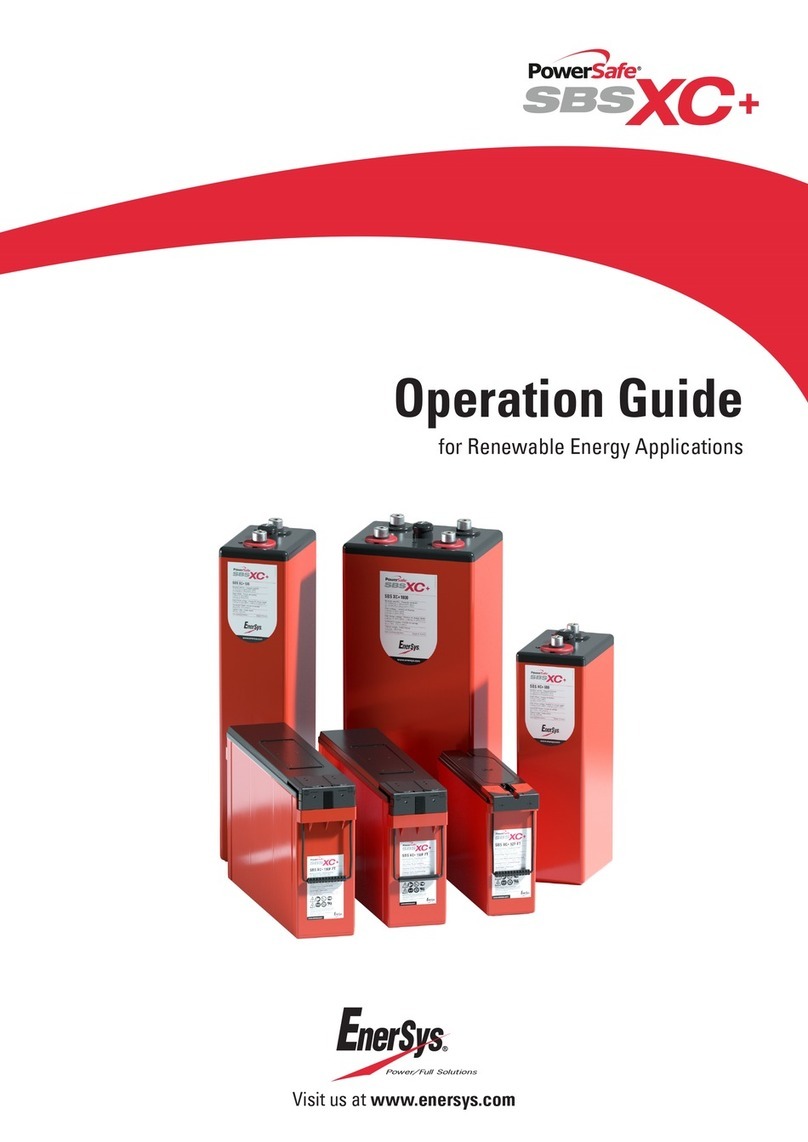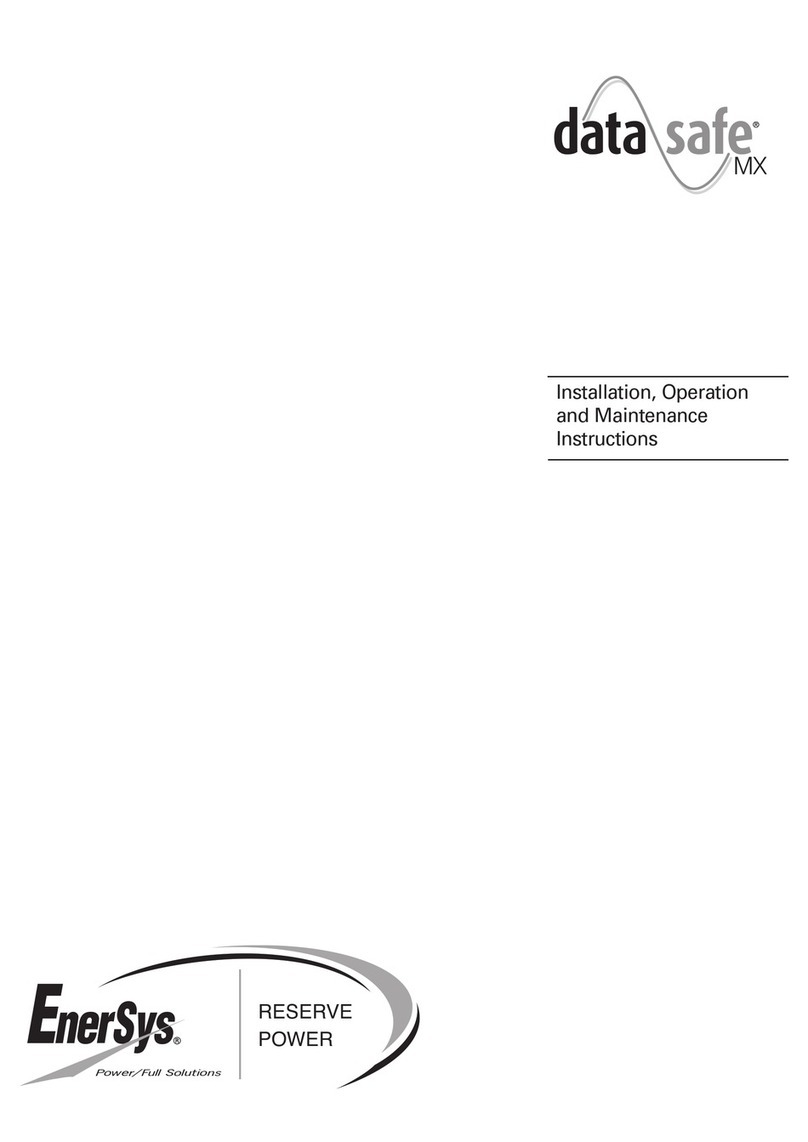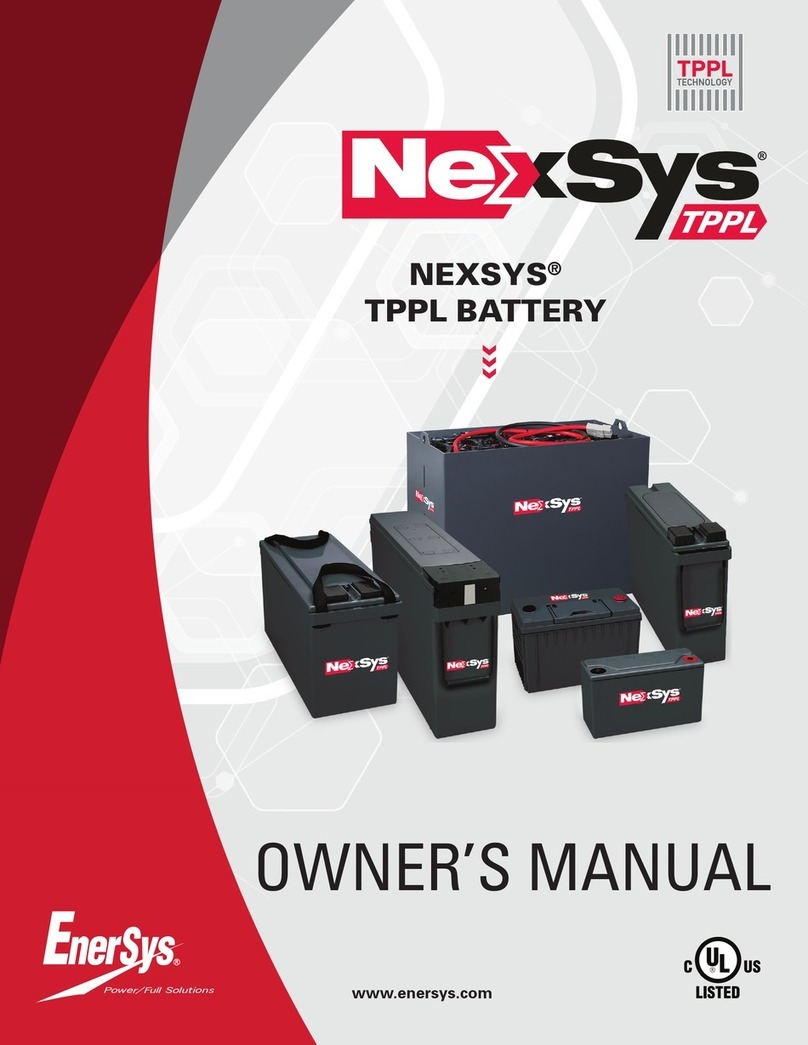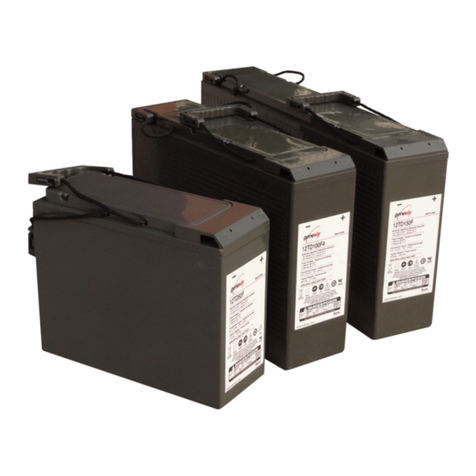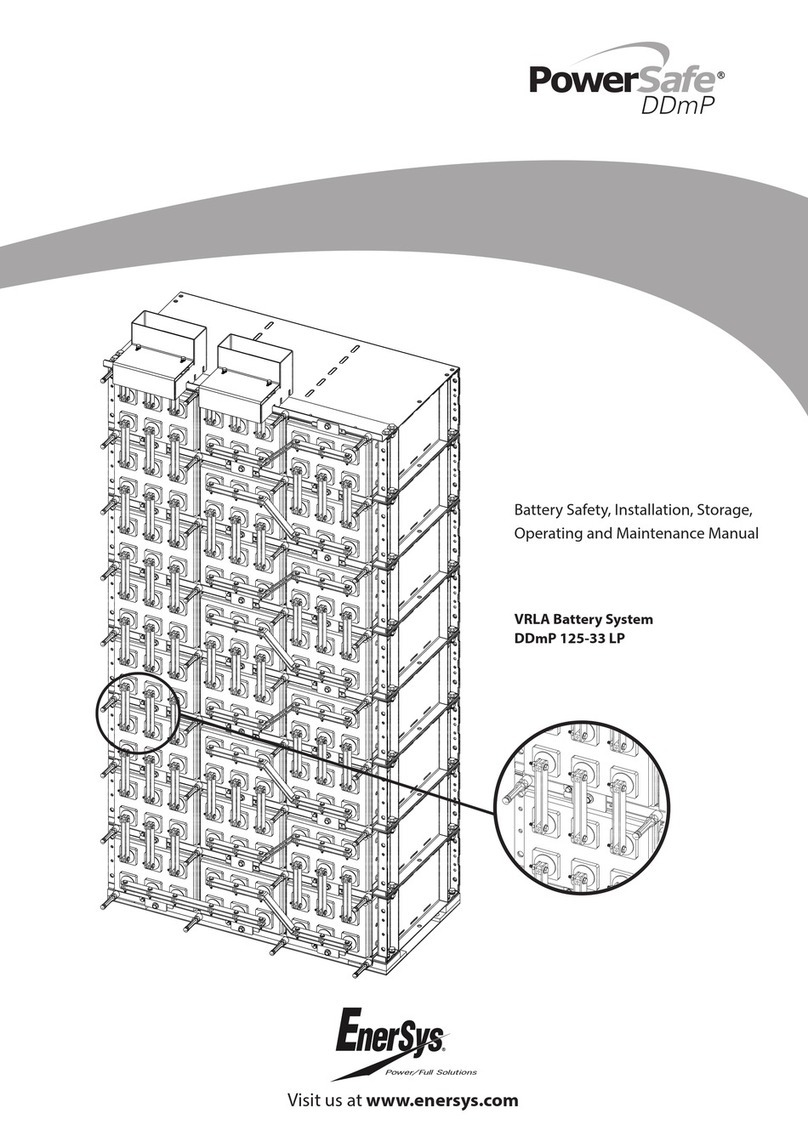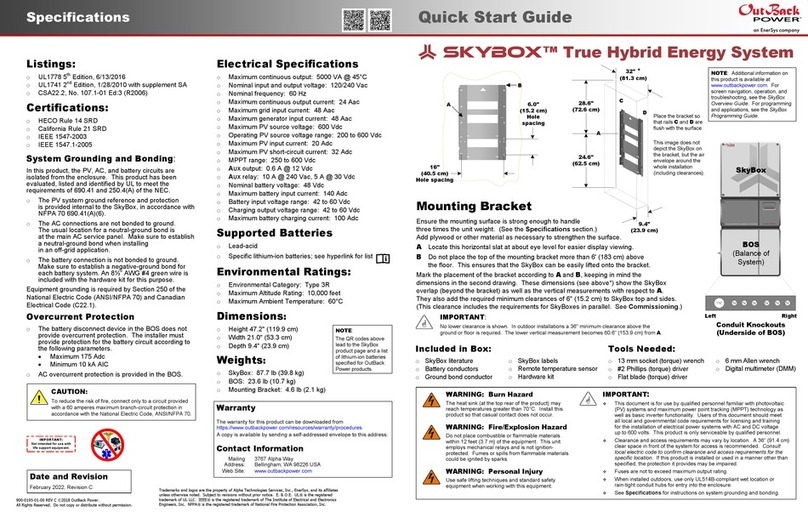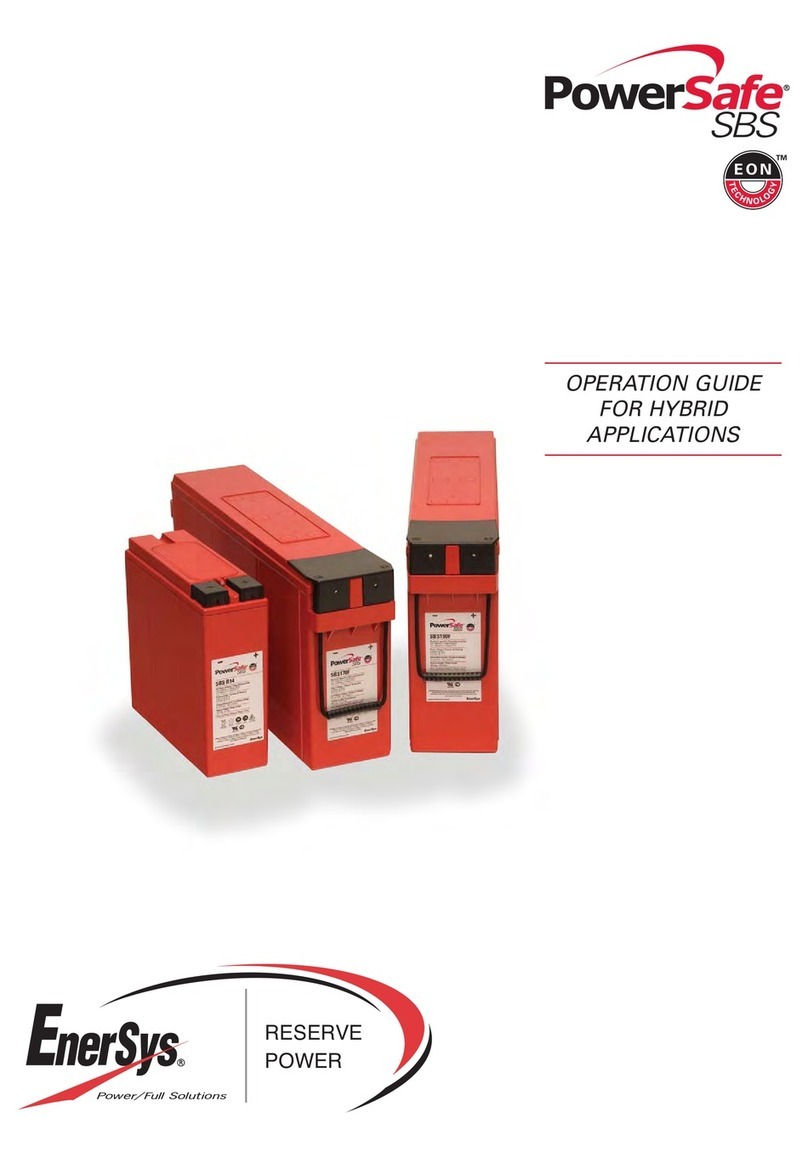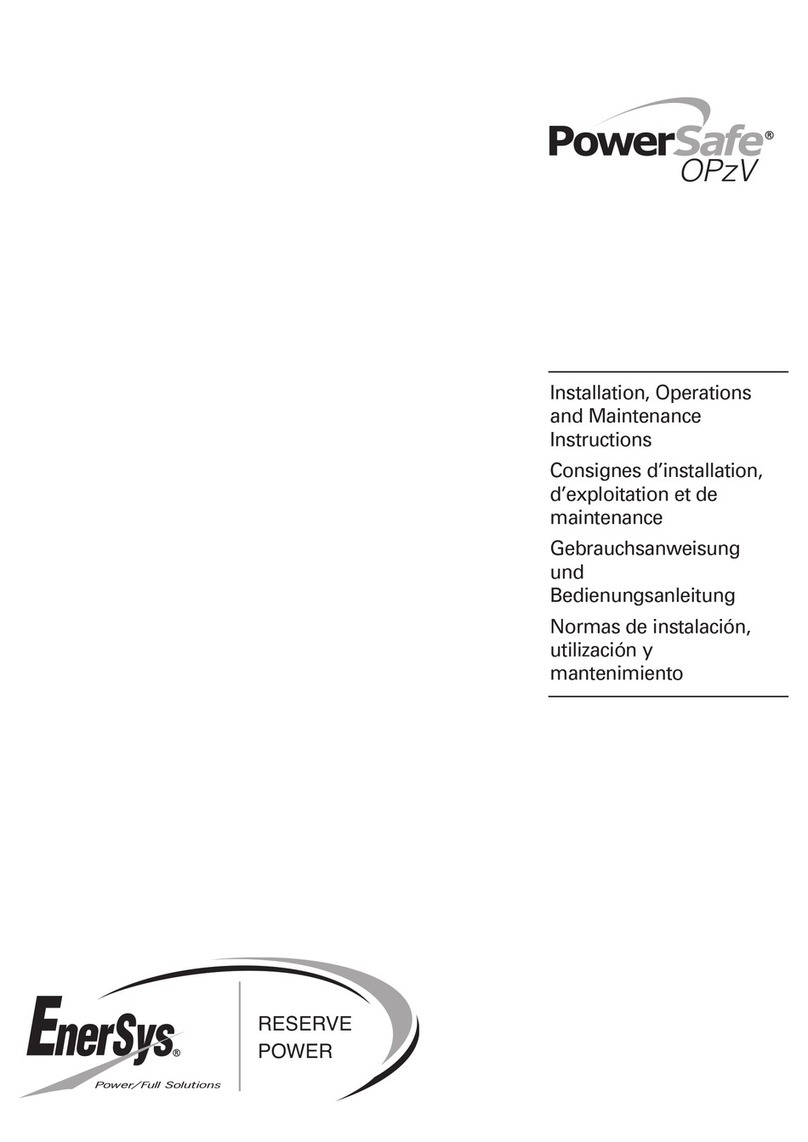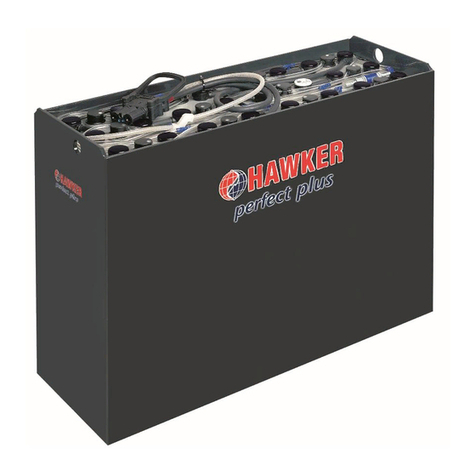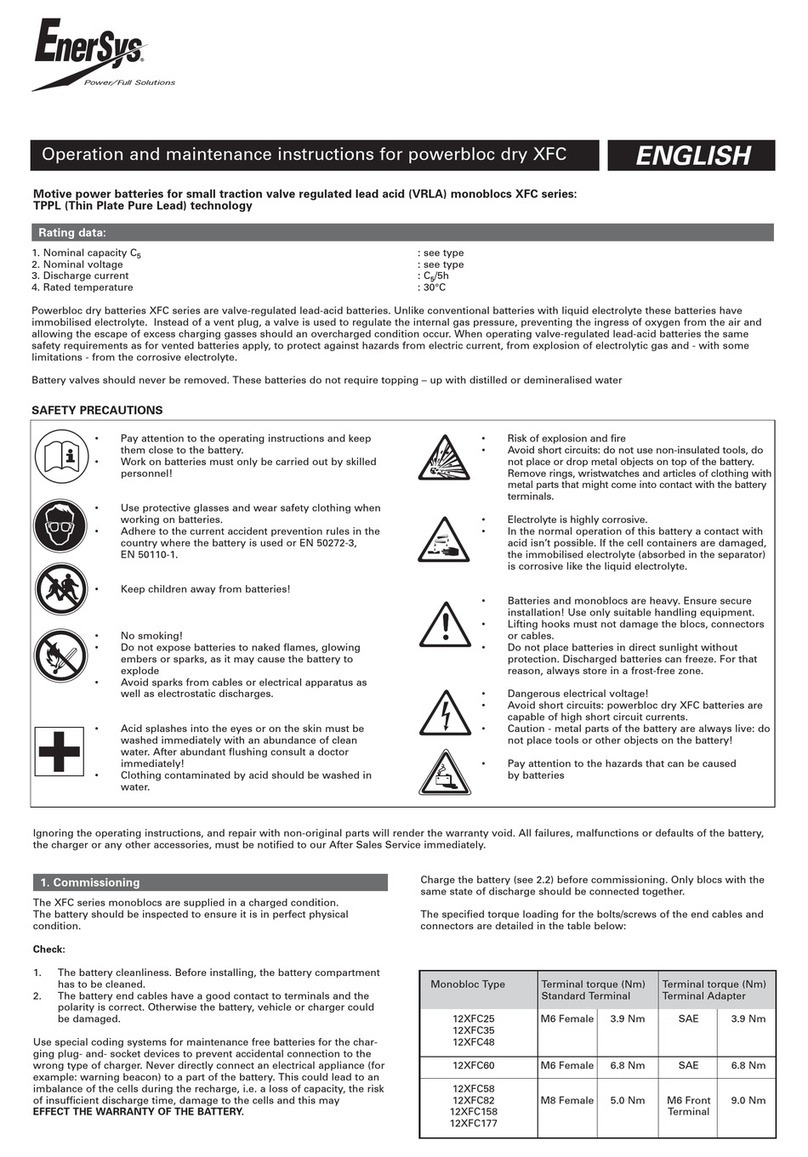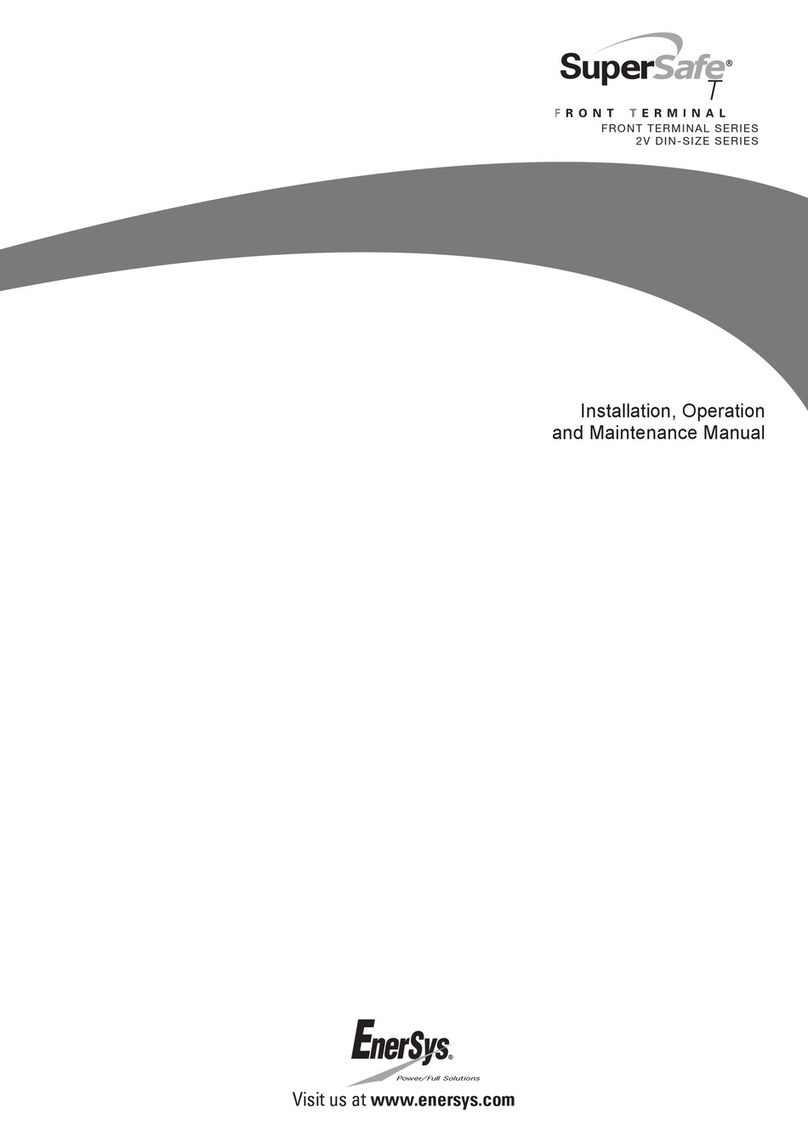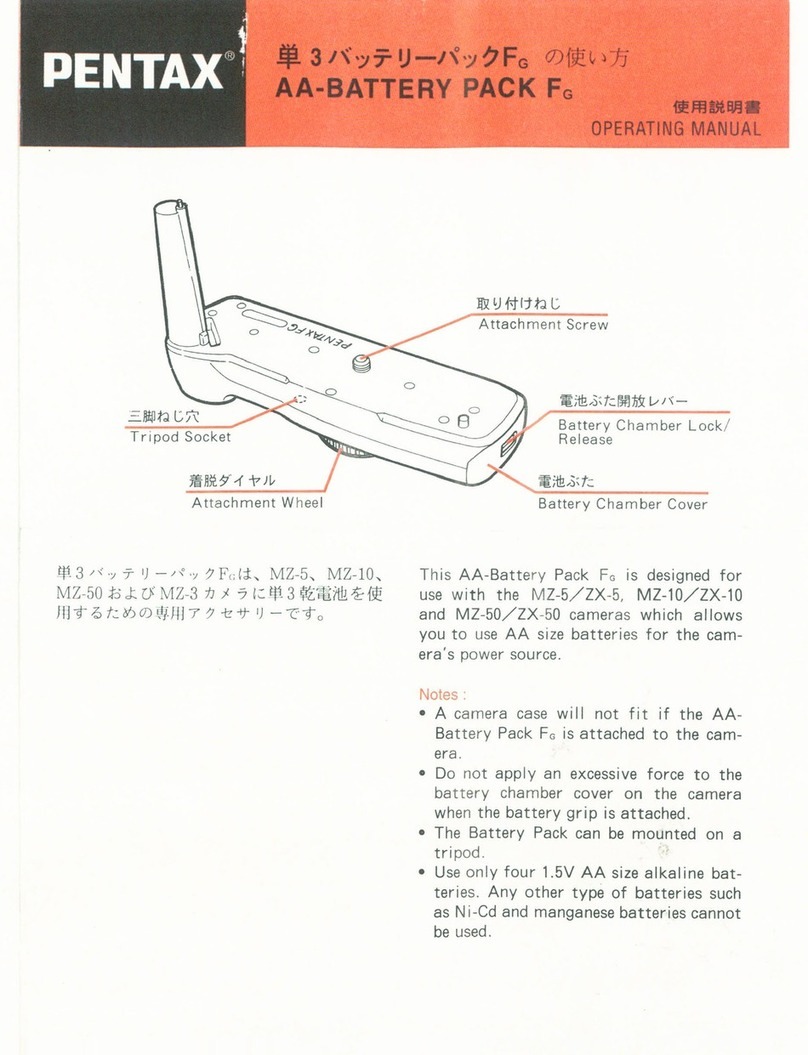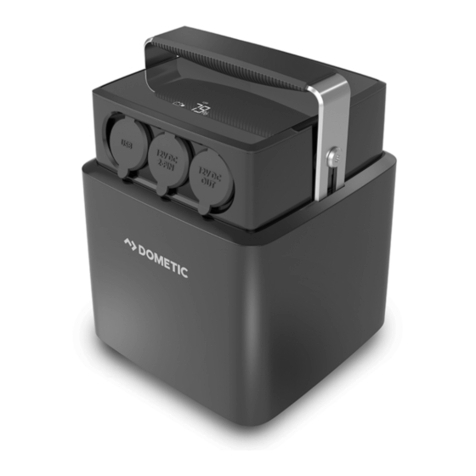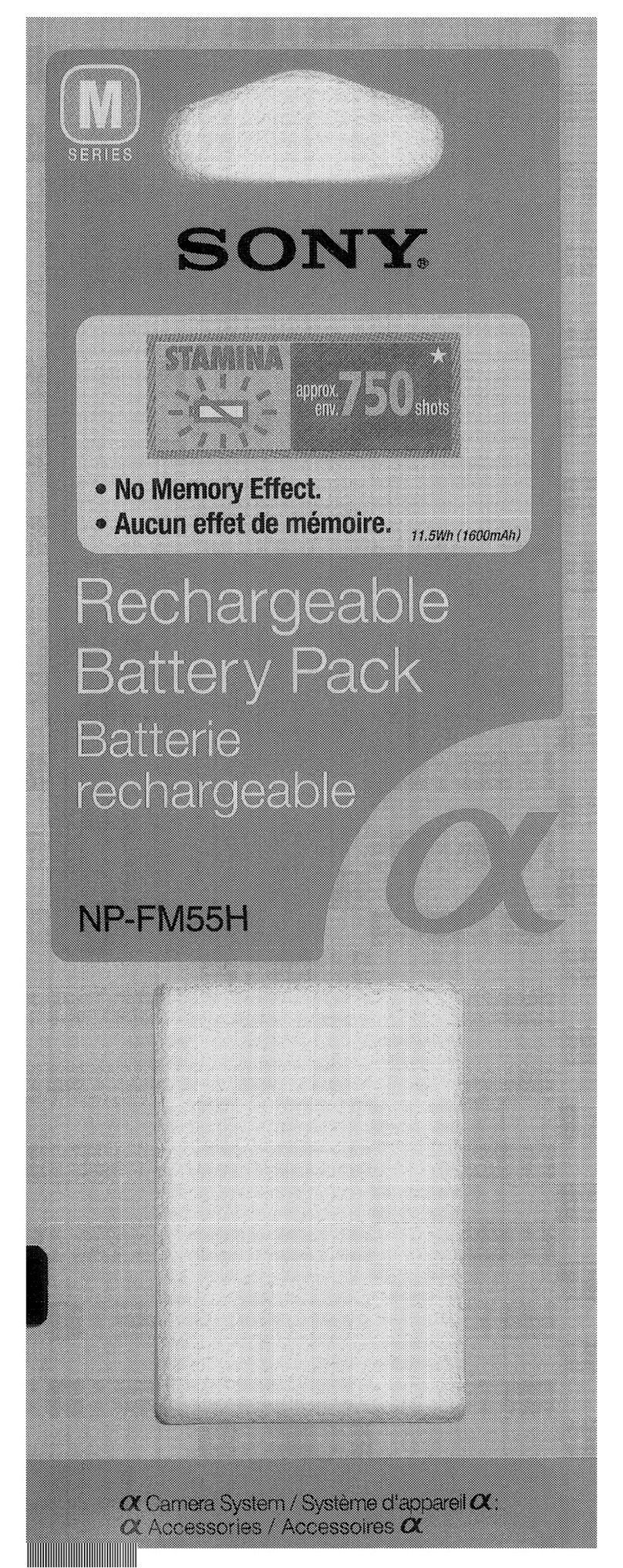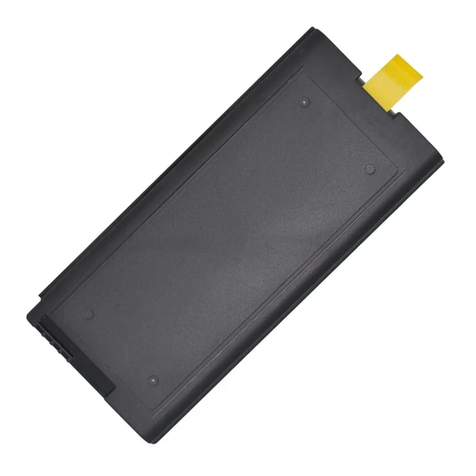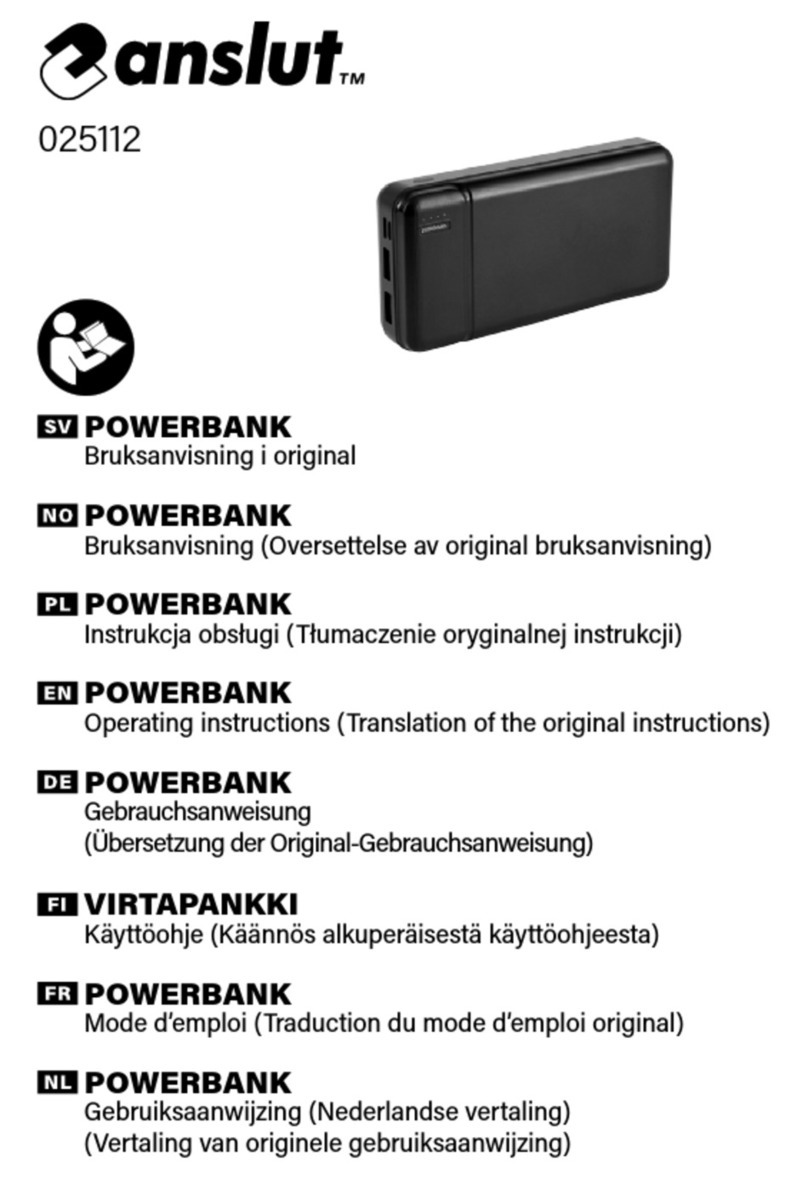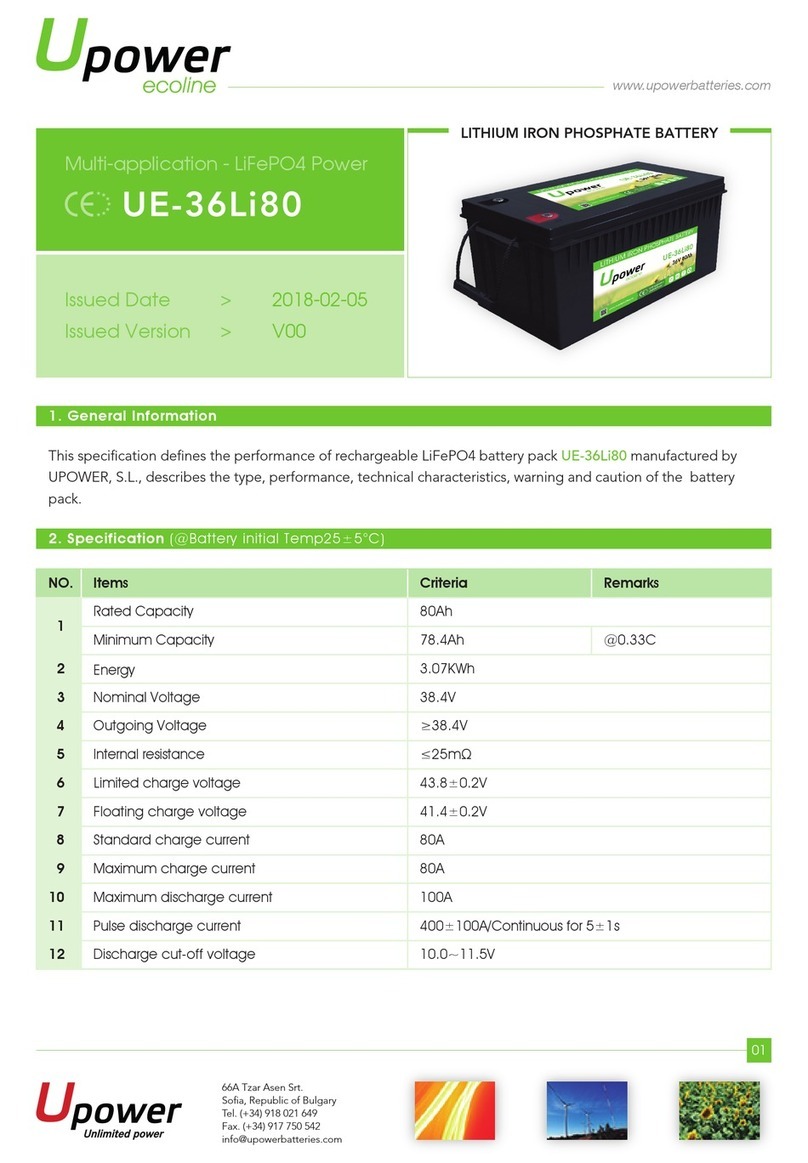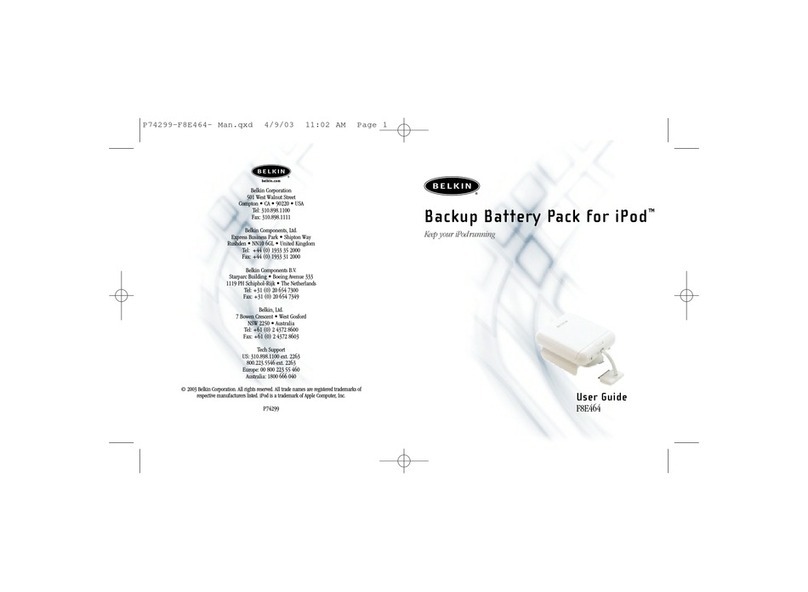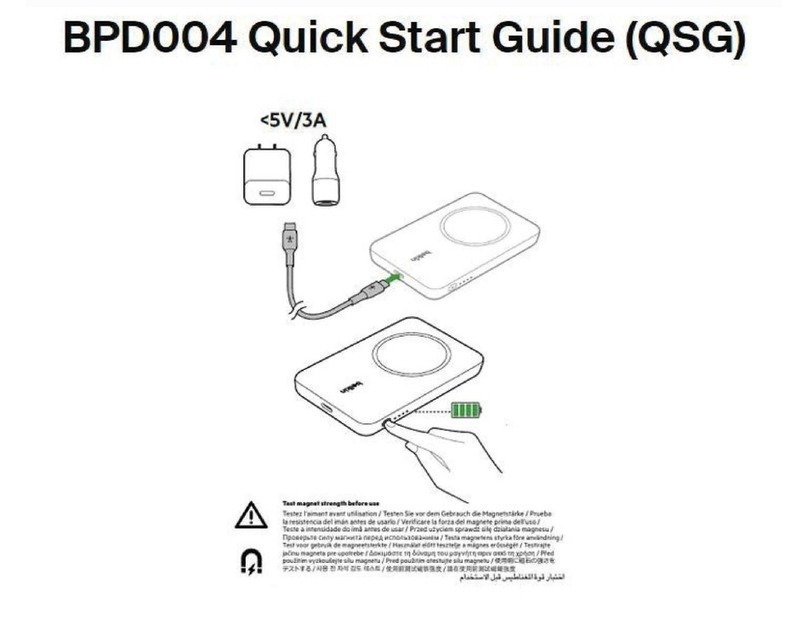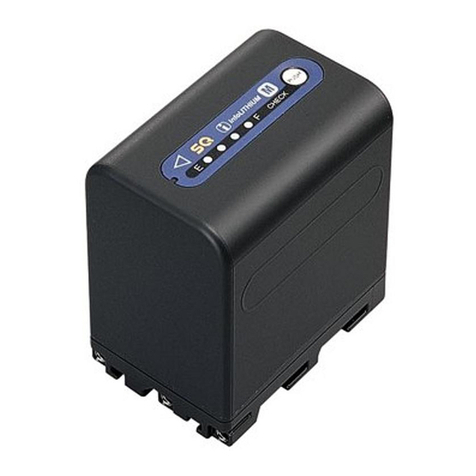
www.enersys-emea-rail.com
A minimum S.G. of the electrolyte of 1.13 kg/l is to be checked at the end of the
discharge. Discharged batteries must be recharged immediately and must not be
left in a discharged condition:
This also applies to partially discharged batteries. Discharged batteries can
freeze.
TM
PerfectRail DS batteries can be recharged with 50 Hz or HF charger. If you wish
to use an existing charger with Wa, WoWa, IUIa, WUIa…profile, you should
check that the profile is approved by our Technical Department. Only direct
current must be used for charging. Only connect the battery to the correctly
assigned charger, suitable for the battery size in order to avoid overloading of the
electric cables and contacts, electrolyte overflow and unacceptable gassing of
the cells. When gassing the current limits must not be exceeded according to
DIN EN 50272-3. Before starting the charge, make sure of:
źthe presence of the plugs.
źIn the case of water refilling system, check the good condition of the filling up
circuit and specific plugs, the water tube connection for the filling device (fast
connection between the battery and the system with water supply).
When charging, proper provision must be made for venting of the charging
gases. Battery container lids and the covers of battery compartments must be
opened or removed. Keep vent plugs closed. With the charger switched off,
connect the battery ensuring that the polarity is correct (positive to positive,
negative to negative). Now switch on the charger. In the case of automatic filling
up, with manual command, press the push –button of the electro valve box to
release the supply of demineralized water, at the end of charge. When charging
the temperature of the battery rises by about 10°C, so charging should only begin
if the electrolyte temperature is below 45°C. The electrolyte temperature of the
battery should be at least +10 °C before charging, otherwise a full charge will not
be achieved without specific settings of the charger. The charge is considered as
achieved when the electrolyte S.G. and the battery voltage remain constant for 2
hours. During the recharge, the cells emit hydrogen and oxygen gas. It is
necessary to ensure ventilation in the room, especially during the recharge. All
installations must comply with the current regulations in force in the country of
operation.
It is applied further to a «normal» discharge of the battery (up to 80% of C5). It is
not interrupted until the end of charge indication by the charger display. It is not
necessary to recharge the battery immediately if after a use cycle, the residual
capacity is still more or equal to 60% of its capacity.
In that case it is necessary to recharge the day after at the latest.
Equalizing charges are used for insuring the service life and to maintain the
capacity. They are necessary after deep discharges and after repeated
uncompleted charges. They allow homogenization of the specific gravity of the
electrolyte:
źto compensate the self-discharge due to the storage period
źto compensate the eventual lack of charge with normal charges.
źto quickly homogenize the electrolyte, following the addition of distilled or
demineralized water.
źto compensate stratification, following partial charges without mixing of the
electrolyte (not recommended).
To be carried out after a normal charge when a variation (differences more than
10 grams per litre) of specific gravity is recorded. It is carried out using a constant
current with a low value near C5 /30 (C5 /20 max) and after a normal charge of the
battery (end of charge, see 2.2). The recommended duration is 8 hours. The
equalizing charge may be interrupted if the specific gravities are homogenized.
When the nominal electrolyte specific gravity is not obtained after an equalizing
charge, and when this low specific gravity is not the consequence of electrolyte
overflowing, a recharge in completion with the equalizing charge can be carried
out. It must be done with constant current, near C5 /60 A, and after a complete
charge for 72 hours. Watch the temperature and a sufficient ventilation!
Should be carried out after a very deep discharge of the battery (> 80% C5) when
the charger does not start the recharge due to an over discharge of the battery. It
must carried out with constant current, near C5 /60, for 2 hours minimum. It is
followed by a normal charge and equalizing charge (desulphation if necessary).
The best result is obtained with the lowest value of current. In any case, stop the
charge if the electrolyte temperature reaches 45°C
The electrolyte nominal S.G. is 1.29 kg/l at 25°C when in fully charged condition.
According to temperature, S.G. correction, in respect to 25°C, will be applied:
Example: SG reading 1.282 at 36°C:
1.282+ (0,0007 X 11) = 1.289 at 25°C
The purity of the electrolyte must correspond to DIN 43530-2.
After a normal charge, measure:
źthe total voltage
źthe voltage per cell
źthe electrolyte specific gravity on several cells or on the whole battery.
NB: measure at the constant intensity of I=0.033 C5 or if the charger can do it, at
“equalizing charge”. The voltages for a new battery will be greater than or equal to
2.65 Volts per cell under I=0,033 C5.
źkeep the battery, clean and dry in order to avoid self-discharging and current
leakage.
źcheck: the condition of the plugs, cables and that all insulation covers are in
place and in good condition.
If necessary, adjust the electrolyte level of each cell, only use demineralized or
distilled water. The level must never be lower than the minimum level, in other
words, always above the plates. It is carried out:
źat the end of charge and without over exceeding the maximum level if the
battery has standard filling plugs.
VERY IMPORTANT
In difficult conditions, high room temperature for example, the electrolyte level
must be checked as often as necessary.
If there are traces of electrolyte-overflowing, in general, lead sulphate trails, wash
the battery with clean water at low pressure, with the cells vent plugs in place and
closed.
Carry out an end-of-charge control: measure and record the voltages of all blocs
with the charger switched on. Measure and record the electrolyte S.G. of all blocs.
If significant variations to the earlier measurements or big variations between the
blocs or cells are noticed, please contact our Service. If the battery autonomy is
not sufficient, check that the work required is compatible with the battery capacity,
the battery condition (end of charge SG), and the settings of the charger.
Battery: for bolt on connectors, check the torque settings of the terminal
bolts/screws, the terminals must be covered with grease as protection against
external corrosion. Charger: internal dust removal, check all connections (plugs,
cables and contacts) and charging parameters.
At least once a year, the insulation resistance of the locos and of the battery must
be checked by an electrical specialist.
The test on the insulation resistance of the battery must be conducted in
accordance with DIN EN 1987-1. The average insulation resistance of the battery
must not be lower than 50 Ω per Volt nominal voltage (DIN EN 50272-3)
For batteries up to 20 V nominal voltage the minimum value is 1000 Ω.
Batteries must always be stored and transported securely in the vertical position
in order to avoid any electrolyte leakage. Store the battery in a fully charged
condition in a dry, clean and frost free area. Always disconnect the battery from
the electric vehicle before storage. For easy recharge of the batteries, it is advised
not to store without recharge for more than 3 months at 20°C and 2 months at
30°C.
The storage time is to be considered within the battery life expectancy.
To ensure the battery is always ready for use a choice of charging methods can be
made:
źmonthly equalizing charge according to 2.2.2
źfloat charge with 2.27 V x number of cells.
Back to the manufacturer!
Batteries with this sign must be recycled.
Batteries which are not returned for the recycling process must be disposed of as hazardous waste!
2.4. Battery Check
3. Maintenance
3.1. Daily maintenance:
3.2. Weekly maintenance:
3.3. Monthly or quarterly maintenance:
3.4. Annual maintenance:
4. Storage and Transportation
2.2. Charge
2.2.1 Normal charge:
2.2.2. Equalizing charge:
2.2.3. Desulphation charge:
2.3. Electrolyte
Perfect DS Manual_ Subject to revisions without prior notice.Rail _ 01_EN_2015-06-V1


